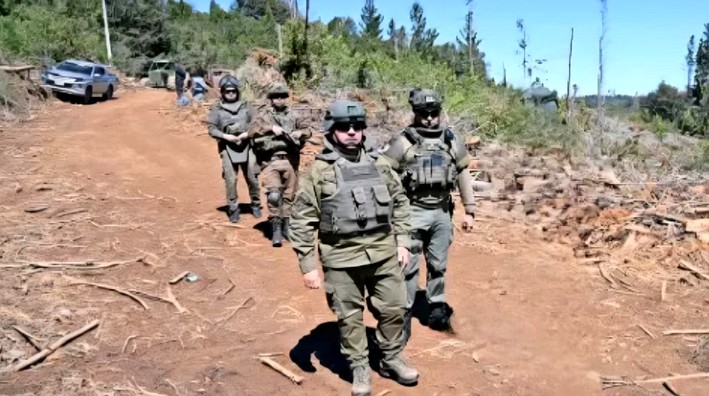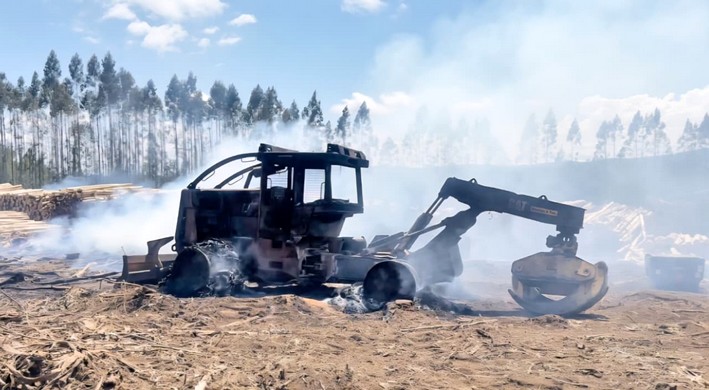Incongruent Figures: Institutional Silence in the Face of Native Forest Loss in Chile
By Simón Berti. President of the College of Forestry Engineers
Recently, two news stories have reignited the already Byzantine debate about how much native forest exists and how much has been lost or is currently being lost in Chile.
The first was the publication of the first collection of maps from the MAPBIOMAS platform, a collaborative initiative between four universities (University of Chile, University of Concepción, University of Magallanes, and University of La Frontera). This platform monitors land cover changes for different land uses (See here).
The first map collection covers the period 2000-2022, and some of the results reveal a loss of 590 thousand hectares of native forest between the Valparaíso and Los Lagos regions during the study period. That is, just over 25 thousand hectares per year.
This figure shows a significant discrepancy with the official reports from the National Forestry Corporation (CONAF), based on the vegetation resources survey.
The second related news came with the publication of the latest version of the Country Report: State of the Environment, a periodic publication by the Center for Public Policy Analysis at the University of Chile's Faculty of Government. Its latest edition (2023) reports a loss of 450 thousand hectares of native forest for the period 2001-2019.
Once again, the figure presents a significant discrepancy with the official reports from the National Forestry Corporation.
The discrepancies in the case of MAPBIOMAS could be due to methodological issues or differences in land cover classification. Where some see forests, others see shrublands. It could be.
But this should not be the case for the data published by the University of Chile, as it uses the same information source from the survey conducted by CONAF. With the same data, another analysis—cited in the book "Half a Century of Public Policies for Nature Conservation" by forestry engineer Leonardo Araya—estimates a loss of 187 thousand hectares of native forest for the same period.
With the caveat that Araya includes a natural forest recovery of 111 thousand hectares, so the net loss balance is 76 thousand hectares.
How much native forest is really being lost?
Leonardo Araya has also pointed out, upon reviewing some of the maps published by MAPBIOMAS, that they contain errors, casting doubt on their results. A broader analysis of more maps will be needed to draw more definitive conclusions, but the errors, according to Araya, are striking.
Due to space constraints, I won’t include data from numerous other publications in recent years that also present figures conflicting with official records.
The gravity of these discrepancies lies in the fact that official land use and land use change figures are fundamental for guiding the country's public policies.
How much native forest is really being lost?
What are the causes?
Are forest plantations expanding or shrinking, as various sector stakeholders claim?
Is native forest currently being replaced by plantations?
If doubt is cast on the official land use and land use change figures, then all official information relying on those figures could be called into question, including the National Inventory of Greenhouse Gas Emissions (INGEI) reported to the United Nations Framework Convention on Climate Change.
Progress in emission reductions and the international funding the country receives for these achievements would be in doubt. For this reason, it is incomprehensible that the state agencies responsible for these figures—the National Forestry Corporation and the Forestry Institute—do not decisively step forward to explain these discrepancies. And if necessary, clarify and reinforce the accuracy of the official figures.
Institutional Silence
There seems to be a certain indifference from both public agencies in clarifying, for example, the truthfulness of the claim that nearly 600 thousand hectares of native forest have been lost in Chile over the last twenty years.
If this were true, it would mean the forestry service's management should be heavily questioned for failing to prevent such loss. And if the figure does not reflect reality, it would be unforgivable for the same agency not to issue a public rebuttal. In either scenario, the institutional silence is deeply concerning.
The same applies to the figures on native forest replacement by plantations. Among other issues, the University of Chile's report denounces the replacement of native forest by plantations exceeding 16 thousand hectares for the period 2017-2019, even though this practice is prohibited by law—legislation that the National Forestry Corporation is responsible for enforcing and overseeing.
My conviction is that this figure is entirely detached from reality, but it is the public agency's duty to confirm or refute it. At the very least, we must demand this to dispel the cloud of doubt hanging over the official figures related to our country's forest cover.

















